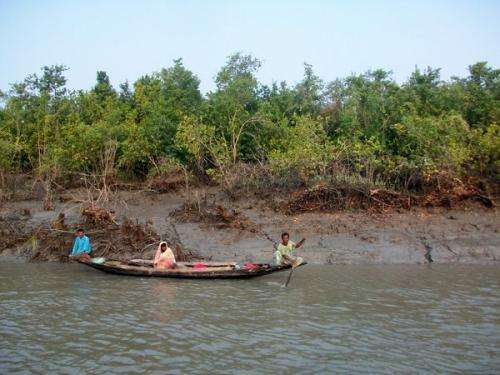Bengali forests are fading away

Rapid deterioration in mangrove health is occurring in the Sundarbans, resulting in as much as 200m of coast disappearing in a single year.
A report published today (11th Jan) in Remote Sensing by scientists from the Zoological Society of London (ZSL) states that as human development thrives, and global temperature continues to rise, natural protection from tidal waves and cyclones is being degraded at alarming rates. This will inevitably lead to species loss in this richly biodiverse part of the world, if nothing is done to stop it.
ZSL's Dr Nathalie Pettorelli, senior author of the paper says: "Our results indicate a rapidly retreating coastline that cannot be accounted for by the regular dynamics of the Sundarbans. Degradation is happening fast, weakening this natural shield for India and Bangladesh."
The name 'Sundarban' can be literally translated as 'beautiful forest' in the Bengali language. The area is is the largest block of continuous mangrove forest in the world, being home to almost 500 species of reptile, fish, bird and mammals, including the endangered Bengal tiger.
Sarah Christie, ZSL's tiger conservation expert says: "The Sundarbans is a critical tiger habitat; one of only a handful of remaining forests big enough to hold several hundred tigers. To lose the Sundarbans would be to move a step closer to the extinction of these majestic animals."
Although mangroves are rare, they are an important barrier against climate change, providing protection to coastal areas from tsunamis and cyclones. They are also the most carbon rich forests in the tropics with high carbon sequestration potential, meaning their degradation and loss substantially reduce our ability to mitigate, and adapt to, predicted changes in climatic conditions.
Mangroves comprise less than 1 per cent of all forest areas across the world, amounting to roughly half the size of the UK. It is essential that the protection of mangroves becomes a priority, particularly for the charismatic species which will disappear with them if no action is taken to preserve their habitat.
ZSL's Chief Mangrove Scientific Advisor Jurgenne Primavera says: "Mangrove protection is urgent given the continuing threats to the world's remaining 14 to 15 million hectares of mangroves from aquaculture, land development and over-exploitation. The recently established IUCN SSC Mangrove Specialist Group, hosted by ZSL, will develop a global conservation strategy for mangroves based on an assessment of research and conservation needs."
Provided by Zoological Society of London



















